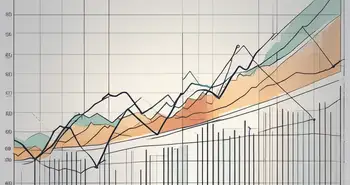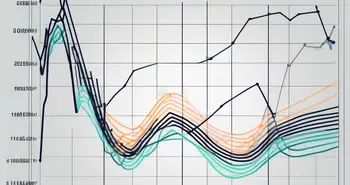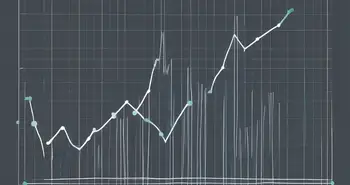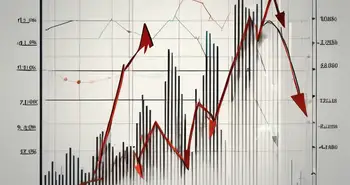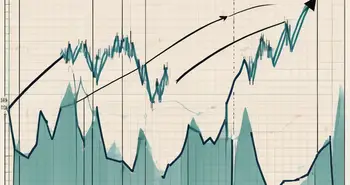Trading Success with Adaptive Moving Average (AMA)
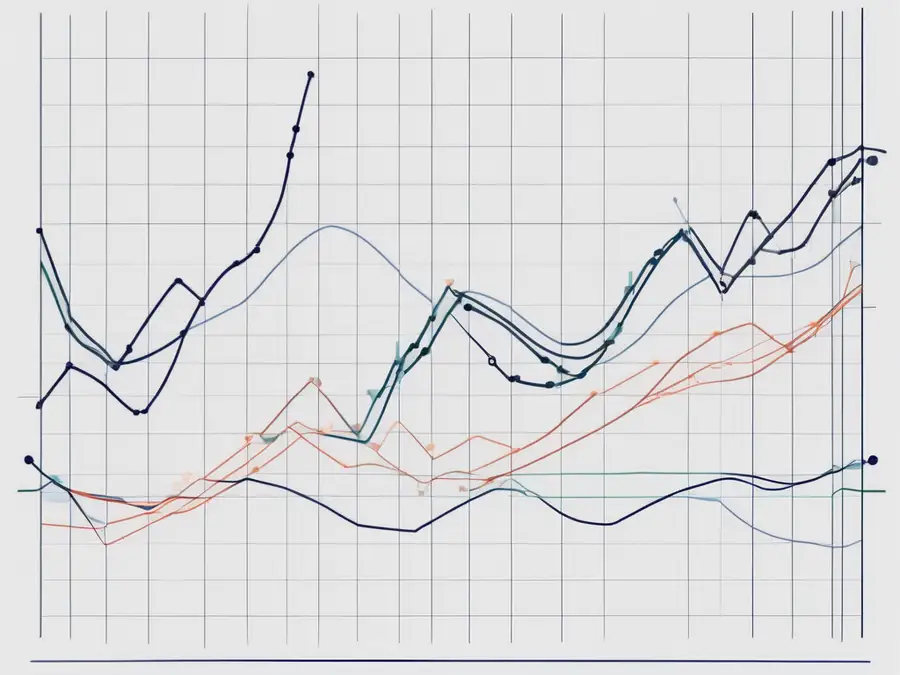
Adaptive Moving Average (AMA) is a powerful tool that can significantly improve your trading strategy. In this ultimate guide, I'll walk you through everything you need to know about AMA – from its basics to implementing it in your own trading approach. Get ready to take your trading game to the next level!
Understanding the Basics of Adaptive Moving Average
Let's start by understanding what Adaptive Moving Average really is. AMA is a type of moving average that adjusts its sensitivity to market fluctuations. Unlike traditional moving averages, which use a fixed period, AMA adapts dynamically to changing market conditions. This means that it can capture both short-term and long-term trends more accurately.
So why is AMA important in trading? Well, the answer lies in its ability to adapt. As a trader, you know that market conditions can change rapidly. By using AMA, you can stay ahead of the curve and make more informed trading decisions. It helps you filter out market noise and focus on the significant price movements, leading to better entry and exit points.
Now, let's dive into the key components of Adaptive Moving Average:
What is Adaptive Moving Average?
AMA is a technical indicator that adjusts its sensitivity based on market volatility. It assigns higher weight to recent price data during volatile times and lower weight during calmer periods. This adaptability allows for a more accurate representation of the current market sentiment.
The Importance of AMA in Trading
AMA's adaptive nature is crucial in trading because it helps traders avoid false signals and reduces the impact of market noise. By adapting to changing market conditions, AMA provides a more reliable signal of trend direction, making it an invaluable tool for swing traders and trend followers.
Key Components of Adaptive Moving Average
There are two key components that make up Adaptive Moving Average: Efficiency Ratio (ER) and the smoothing constant. The Efficiency Ratio measures the quality of AMA's adaptation, while the smoothing constant determines the speed of adjustment. Understanding these components is essential for effectively using AMA in your trading strategy.
The Mathematical Framework Behind AMA
To fully grasp how AMA works, it's important to understand the mathematical framework behind it. Let's take a closer look at the calculations involved:
Calculating the AMA
The AMA calculation involves a two-step process. First, we calculate the Efficiency Ratio (ER) using the formula: ER = (|close – prev_close|) / (sum of |close – prev_close| over a given period). The ER ranges from 0 to 1, where 1 represents a perfectly trending market and 0 indicates a completely random market.
Next, we calculate the smoothing constant using the formula: SC = (ER * (fast SC – slow SC)) + slow SC. The smoothing constant determines how quickly AMA adapts to changing market conditions.
Finally, we calculate the Adaptive Moving Average by multiplying the smoothing constant with the current price deviation from the previous AMA value and adding it to the previous AMA value.
Understanding Efficiency Ratio (ER)
The Efficiency Ratio plays a critical role in determining the adaptation speed of AMA. It measures the strength of trends in the market and adjusts the smoothing constant accordingly. A higher Efficiency Ratio indicates a stronger trend, resulting in a faster adaptation speed.
The Role of Smoothing Constant in AMA
The smoothing constant determines how quickly the Adaptive Moving Average adapts to changes in market conditions. A higher smoothing constant results in a faster adaptation, while a lower smoothing constant leads to slower adaptation. The choice of smoothing constant depends on your trading style and the time frame you're trading.
The Difference Between AMA and Other Moving Averages
Now, let's explore how Adaptive Moving Average differs from other types of moving averages:
AMA vs Simple Moving Average (SMA)
The main difference between AMA and Simple Moving Average is the adaptive nature of AMA. While SMA gives equal weight to all data points, AMA adjusts its sensitivity based on market conditions. This makes AMA more responsive to market trends and less prone to lagging.
AMA vs Exponential Moving Average (EMA)
AMA and Exponential Moving Average both adapt to changing market conditions. However, EMA gives more weight to recent price data, while AMA adjusts its sensitivity dynamically. This makes AMA particularly useful in volatile markets, where EMA may generate false signals.
Implementing Adaptive Moving Average in Your Trading Strategy
Now that you understand the basics and mathematical framework of AMA, it's time to explore how to incorporate it into your trading strategy.
Identifying Market Trends with AMA
AMA's adaptability makes it a powerful tool for identifying market trends. By monitoring the slope and direction of the Adaptive Moving Average, you can spot potential trend reversals and stay aligned with the overall market trend. This helps you make more informed decisions and avoid being caught on the wrong side of the market.
Using AMA for Buy and Sell Signals
AMA can also be used to generate buy and sell signals. When the price crosses above the Adaptive Moving Average, it can signal a potential buy opportunity. Conversely, when the price crosses below the Adaptive Moving Average, it may indicate a sell opportunity. However, it's important to consider other technical indicators and market conditions before making a trading decision.
Personally, I've found great success using Adaptive Moving Average in my own trading strategy. It has helped me navigate through volatile markets and filter out noise, leading to more profitable trades and better risk management. It's amazing how a simple adjustment to the moving average formula can make such a significant impact on trading performance.
Common Misconceptions and Pitfalls of Using AMA
While Adaptive Moving Average is a powerful tool, it's essential to be aware of its potential pitfalls. Let's take a closer look at some of the common misconceptions and pitfalls of using AMA:
Overcoming Noise in AMA
One of the challenges with using AMA is dealing with market noise. As with any technical indicator, there will be false signals and whipsaws. To overcome this, it's crucial to use AMA in conjunction with other technical analysis tools and market context. By confirming signals with additional indicators or price patterns, you can reduce the impact of noise and increase the accuracy of your trading decisions.
Avoiding False Signals with AMA
Another pitfall of using AMA is the potential for false signals, especially during periods of low volatility. As AMA adapts to market conditions, it can generate signals based on temporary price fluctuations. To avoid false signals, it's important to consider the overall market context and use additional confirmation indicators before making trading decisions.
FAQ
What is Adaptive Moving Average (AMA)?
Adaptive Moving Average (AMA) is a type of moving average that adjusts its sensitivity to changing market conditions. Unlike traditional moving averages, which use a fixed period, AMA adapts dynamically based on volatility, resulting in a more accurate representation of market trends.
Why is AMA important in trading?
AMA is important in trading because it helps traders filter out market noise, identify trends, and make more informed trading decisions. Its adaptive nature allows it to capture both short-term and long-term trends, making it an invaluable tool for swing traders and trend followers.
How is AMA calculated?
The calculation of Adaptive Moving Average involves two key components: Efficiency Ratio (ER) and the smoothing constant. The ER measures the quality of adaptation, while the smoothing constant determines the speed of adjustment. The AMA formula involves multiplying the smoothing constant with the current price deviation from the previous AMA value and adding it to the previous AMA value.
How does AMA differ from other moving averages?
Adaptive Moving Average differs from other moving averages in its adaptability. While Simple Moving Average (SMA) gives equal weight to all data points and Exponential Moving Average (EMA) assigns more weight to recent data, AMA adjusts its sensitivity dynamically to changing market conditions. This makes it more responsive to market trends and less prone to lagging.
How can I incorporate AMA into my trading strategy?
You can incorporate Adaptive Moving Average into your trading strategy by using it to identify market trends and generate buy and sell signals. By monitoring the slope and direction of the Adaptive Moving Average, you can spot potential trend reversals and align your trades with the overall market trend. It's important to consider other technical indicators and market conditions before making trading decisions.
Remember, Adaptive Moving Average is just one tool in your trading arsenal. It's important to combine it with other indicators, risk management techniques, and your own analysis to build a robust trading strategy. With practice and experience, you can harness the power of AMA to improve your trading results and achieve greater success in the markets.
Ready to apply the insights from The Ultimate Guide to Adaptive Moving Average (AMA) on a cutting-edge platform? Look no further than Morpher, the revolutionary trading platform that leverages blockchain technology for a seamless investing experience. With Morpher, you can trade a variety of asset classes with zero fees, infinite liquidity, and the option for up to 10x leverage. Embrace the future of trading with fractional investing, short selling, and the exclusive Morpher Wallet for ultimate control and safety. Sign Up and Get Your Free Sign Up Bonus today to transform your trading strategy with the adaptability of AMA and the innovative features of Morpher.

Disclaimer: All investments involve risk, and the past performance of a security, industry, sector, market, financial product, trading strategy, or individual’s trading does not guarantee future results or returns. Investors are fully responsible for any investment decisions they make. Such decisions should be based solely on an evaluation of their financial circumstances, investment objectives, risk tolerance, and liquidity needs. This post does not constitute investment advice.

Painless trading for everyone
Hundreds of markets all in one place - Apple, Bitcoin, Gold, Watches, NFTs, Sneakers and so much more.

Painless trading for everyone
Hundreds of markets all in one place - Apple, Bitcoin, Gold, Watches, NFTs, Sneakers and so much more.


